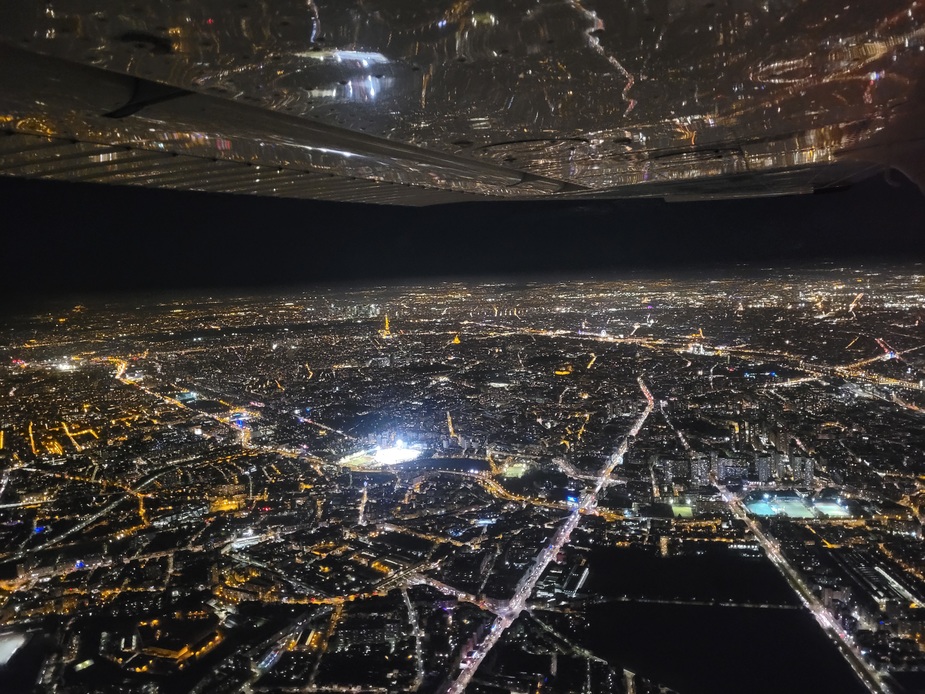gallois wrote:
France AFAIK has always allowed Night VFR
Indeed, I had NQ endorsement on top of my Brevet De Base done at LFPQ, it was sub-ICAO license with NVFR privileges, the NQ was lost when I converted that to FCL as training was not compliant: I had to re-do instrument flying appreciation (Ex19 Basic Instrument Flying or 5h of VSV?) and get my FCL night rating again while in UK
For reference, both EASA & CAA Night Ratings are different for helicopters than SEP fixed-wing. For UK FCL licence holders, a Night Rating (Helicopter) involves:
PREREQUISITES:
- 100 hrs (post license issue)
- 60 hrs PIC
- 20 hrs cross-country
COURSE INCLUDES:
- 5hrs theory instruction
- 10hrs simulated instrument (Foggles)
- 5hr night flying (inc. 3hrs dual, 1hr x-country & 5 solo night circuits)
all of the above must be completed within a 6mo time frame
But as my instructors said " once you are Instrument rated you will probably never fly night vfr again. Why would you when you can fly IFR?”
Because IFR is massive PIA and because your “mission” is e.g. to fly around over an urban area seeking out the best 4th of July fireworks display to watch from the air.
I am sure there are good reasons to fly night even in single engines  let’s hope weather cooperate this winter and some airports are still open !
let’s hope weather cooperate this winter and some airports are still open !
PS: down here IFR is only obligatoire to operate in Alpha TMA in London, Paris, Amesterdam, Madrid…

Airborne_Again wrote:
The requirement to apply IFR minimum heights for night VFR is unreasonable IMO
That’s what I wrote to Danish CAA as soon as SERA went into force. Jacob Pedersen of AOPA Denmark carried it along in the bureaucracy and after about a year’s wrestling the result was that Denmark now has the same minimum altitudes at night as during the day. It makes a huge difference not least because a minimum IFR altitude very often forces you up to where the 1000 ft vertical distance from clouds apply, and special VFR is not possible that high.
Danish rules are even more relaxed than the Norwegian rules in that neither 2000 ft ceiling nor 10 km VIS is required for low flying at night. I guess the difference makes sense as flying visually at night in Norway is more challenging than in Denmark simply because of terrain and because of large areas without ground lights.
The bottom line still is that the S in SERA is a joke. The rules are not standardized, and worse, the differences are next to impossible to find.
gallois wrote:
you will probably never fly night vfr again. Why would you when you can fly IFR?"
For example because you are using an airfield with runway lighting, but no IFR procedures?
huv wrote:
The bottom line still is that the S in SERA is a joke. The rules are not standardized, and worse, the differences are next to impossible to find.
For NVFR, SERA is really a joke as NAA are legally allowed to prescribe lower or higher minimal altitudes, this is the case for France where NVFR MSA is 500ft even higher than IFR MSA let alone day VFR (1500ft above obstacles in +/-8km), this makes NVFR cruise impossible in places where Alpha airspace is lower than 2000ft, except on published routes with exceptions (e.g. TSU-RBT at 1500ft AMSL does not comply with NVFR MSA)
For day VFR, NAA are not legally allowed to prescribe more restrictions than those SERA, some countries still managed to bifurcate their own pseudo-rules (e.g. ‘glide clear rule’ over London, arrete de 1957 in France), the legal mechanisms are very weak, usually one had to rely on pilots spreading non-existent rules
In the eyes of many pilots and many regulators, flying bellow 2000ft agl day or night in cruise without clear gliding spots can be viewed as reckless and illegal under SERA.3101 (only illegal if engine quits and you hit something, if the engine does not quit the flight is obviously legal), if someone is not happy with this stretched interpretation they are told: to stay with their mum  or buy weather capable twins
or buy weather capable twins 
Ibra wrote:
You mean SEP at night otherwise I am lost:
- Can can fly MEP VFR at night?
- Can you fly SEP IFR at night?
- Will you fly PC12/SF50 at night?Unless there is a good reason (e.g. personal phobia, color vision restriction)
At night I prefer IFR and 2 engines – also in severe CAVOK.
And why? I don’t feel safe. Just me. Have had real emergencies at night during SEP IR and MEP IR training. Puts things in perspective.
Michael_J wrote:
At night I prefer IFR and 2 engines – also in severe CAVOK.
I understand the two engines, I don’t understand the IFR requirement in e.g severe CAVOK.
If you have an emergency, who cares about flight rules? Just get to the ground, hopefully at an airfield within range, ASAP – no matter the regulatory environment you started the flight in.
And why? I don’t feel safe. Just me. Have had real emergencies at night during SEP IR and MEP IR training. Puts things in perspective.
It’s a matter of taste some like twins and some like parachutes, some don’t fly at all, some don’t care…whatever floats someone’s boat or get them comfortable flying is a good thing  the risk profile does indeed reduce in cruise over hostile terrain or night but it will shoot over the roof during takeoff/landing in low visibility operations and/or short runways, ‘safe’ gets shifted from one place to another !
the risk profile does indeed reduce in cruise over hostile terrain or night but it will shoot over the roof during takeoff/landing in low visibility operations and/or short runways, ‘safe’ gets shifted from one place to another !